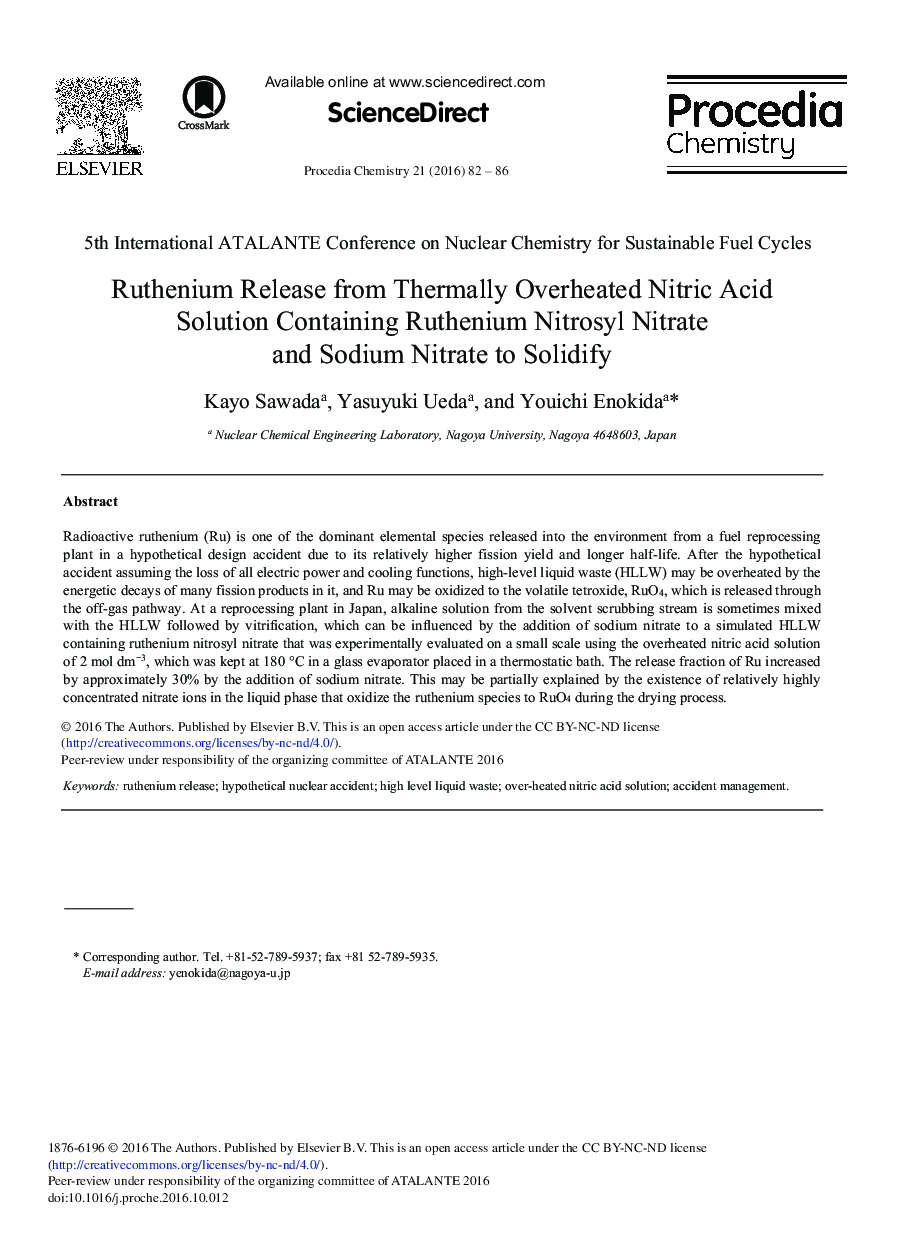| Article ID | Journal | Published Year | Pages | File Type |
|---|---|---|---|---|
| 4910913 | Procedia Chemistry | 2016 | 5 Pages |
Radioactive ruthenium (Ru) is one of the dominant elemental species released into the environment from a fuel reprocessing plant in a hypothetical design accident due to its relatively higher fission yield and longer half-life. After the hypothetical accident assuming the loss of all electric power and cooling functions, high-level liquid waste (HLLW) may be overheated by the energetic decays of many fission products in it, and Ru may be oxidized to the volatile tetroxide, RuO4, which is released through the off-gas pathway. At a reprocessing plant in Japan, alkaline solution from the solvent scrubbing stream is sometimes mixed with the HLLW followed by vitrification, which can be influenced by the addition of sodium nitrate to a simulated HLLW containing ruthenium nitrosyl nitrate that was experimentally evaluated on a small scale using the overheated nitric acid solution of 2mol dmâ3, which was kept at 180°C in a glass evaporator placed in a thermostatic bath. The release fraction of Ru increased by approximately 30% by the addition of sodium nitrate. This may be partially explained by the existence of relatively highly concentrated nitrate ions in the liquid phase that oxidize the ruthenium species to RuO4 during the drying process.
